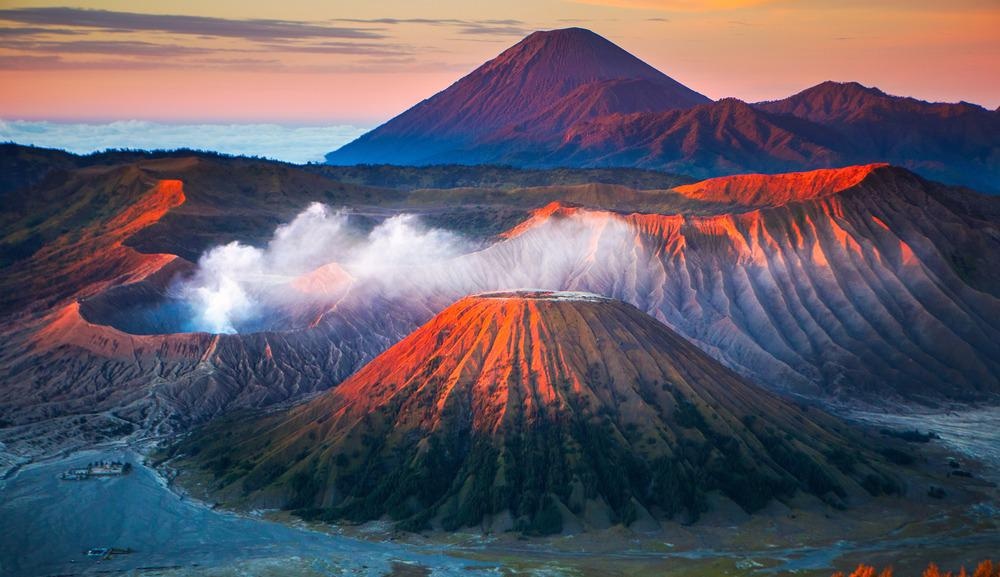New research by a team of scientists from the University of Oxford has identified a potentially abundant new source of useful metal like copper, which we need more of in order to decarbonize the economy. Underground volcano deposits of these metals could be extracted with minimal energy costs while geothermal energy is captured at the same time.

Image Credit: Kanjanee Chaisin/Shutterstock.com
The Need to Find New Metal Deposits
Transitioning to a low-carbon or zero-carbon economy will require many more electronics, which, in turn, requires a wide range of metals, especially copper. Copper is used extensively in power generation, storage, distribution, and in electric vehicles and other electronic devices that might hold the key to decarbonizing our economy.
A team of scientists led by University of Oxford Earth Sciences Professor Jon Blundy has published research that uncovers a previously unknown, abundant source of metals: volcanoes.
The team included volcanologists, hydrodynamic modeling specialists, geochemists, and geophysicists from the UK and Russia. Their research found that it is possible to extract valuable metals directly from hot, salty fluids called “brines” that are trapped in porous rocks below dormant volcanoes.
What are the Challenges Facing Metal Mining Today?
Currently, copper mining requires large amounts of energy to extract relatively low-grade ore from underground mines or open pits. These solid ores need to be crushed and processed to give up the metal inside them, and in the case of copper, less than 1% of the material extracted will be useful. The rest is waste rock.
Copper mines create large scars on the landscape, entail large energy and financial costs in construction and decommissioning, and produce enormous tailings piles of waste rock. They are also highly energy-intensive operations to run.
Metal from Below Volcanoes
The Oxford academics published their findings in Open Science, the journal of the Royal Society in the UK. Their research is positioned against the context of dwindling resources and diminishing returns on mining operations’ investment. While mining is, by definition, an extractive and, therefore, unsustainable activity, some metals need to mined to meet carbon-negative goals. This is because the electronic devices, motors, generators, and batteries needed to drive a carbon-free economy all need copper components to work.
The researchers found that most of the copper on Earth comes from hot, hydrous magmatic fluids – lava. Magma underneath volcanoes emits metal-rich gases which separate into steam and brine when the pressure drops.
Ore is formed through phase separation of magmatic fluids that forms hypersaline liquids (brines) that are high in copper, and subsequently, precipitate copper sulfides. The metals that were dissolved in the original magma gas get highly concentrated in the dense brine, and this, in turn, gets trapped in porous rock.
The team conducted geophysical surveys of volcanoes worldwide. This revealed electrically conductive bodies around 2 km below the surface. These findings were consistent with their proposal that there were deposits of metallic brine hosted in porous rock below dormant volcanoes.
Their research builds on emerging new ideas about crustal magmatism, which seeks to understand the makeup of the earth’s crust better.
The team used hydrodynamic simulations to determine that 10,000 years of magma degassing is enough to create a copper-rich brine that contains up to 1.3 Mt of copper in rock volumes of a few km3 at around 2 km below the surface.
As well as removing the need for conventional mines – considering their inefficient, energy-intensive requirements – the researchers also posited that extracting this metal-rich brine from deep below the planet’s surface could also provide geothermal energy capture opportunities as a by-product.
What Is Green Mining?
The researchers presented their new approach to metal mining as a “green mining” alternative. That is because of the huge energy requirements of conventional metal mining, which this method would avoid due to finding more metal-rich material.
Exploiting geothermal energy to drive operations in the kind of deep sub-volcanic mine proposed by this research would also contribute to a more sustainable mining operation.
The researchers believe that with geothermal energy, minehead operations in a system like this would be carbon neutral.
This radical new approach helps find metals such as copper, gold, zinc, silver, and lithium in a more sustainable manner.
Researchers say that a working “brine mine” could be underway in as little as five years’ time, depending on how well certain safety and risk elements can be mitigated.
References and Further Reading
Blundy, J. et al. (2021) The economic potential of metalliferous sub-volcanic brines. Open Science. [Online] https://doi.org/10.1098/rsos.202192
University of Oxford. (2021) Oxford scientists show how green mining could pave the way to net zero and provide the metals we need for a sustainable future. [Online] Available at: https://www.ox.ac.uk/news/2021-06-29-oxford-scientists-show-how-green-mining-could-pave-way-net-zero-and-provide-metals
Disclaimer: The views expressed here are those of the author expressed in their private capacity and do not necessarily represent the views of AZoM.com Limited T/A AZoNetwork the owner and operator of this website. This disclaimer forms part of the Terms and conditions of use of this website.